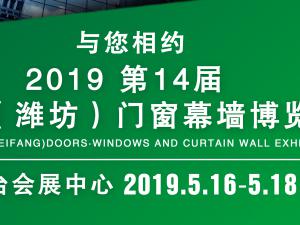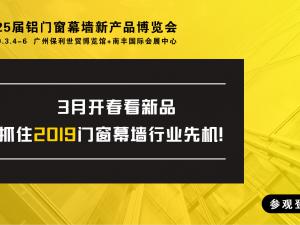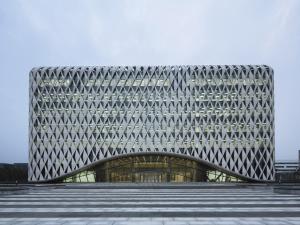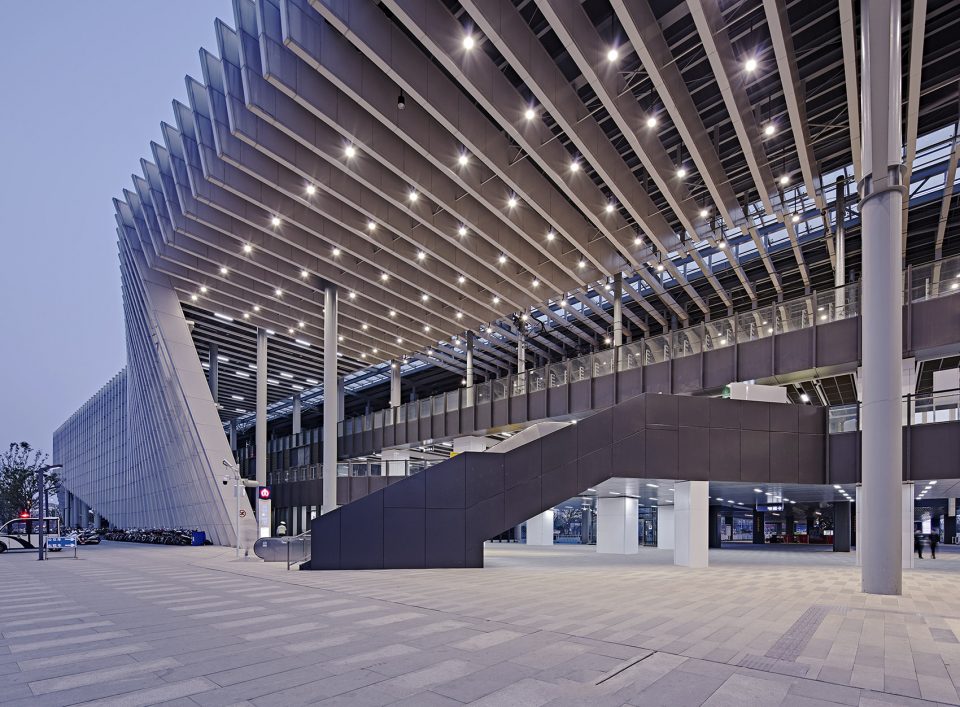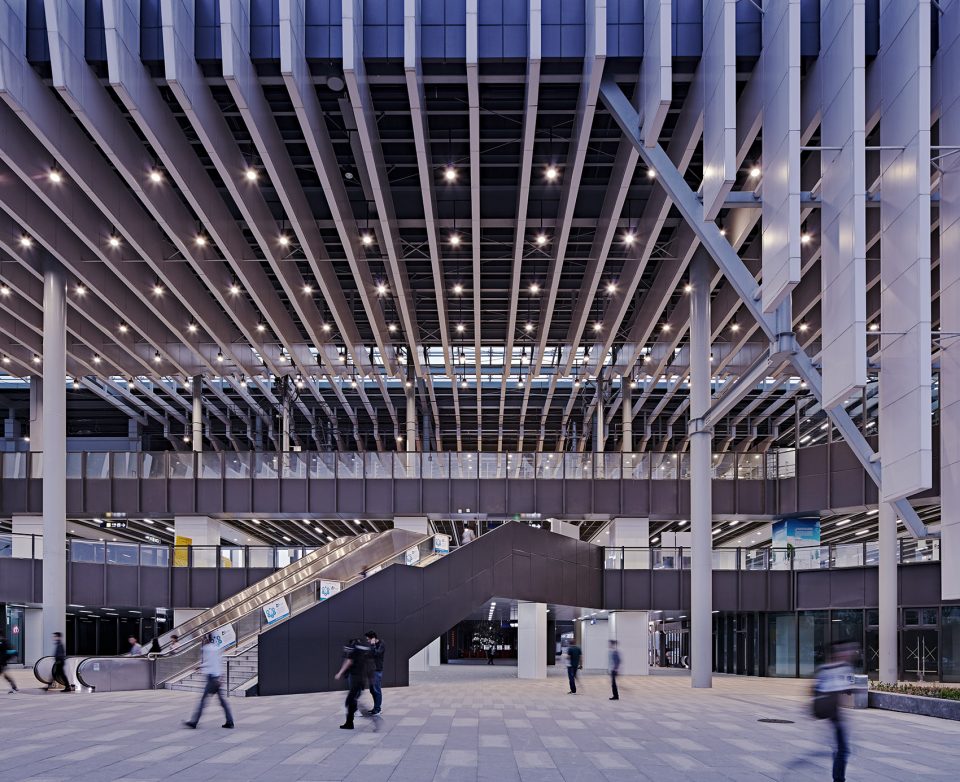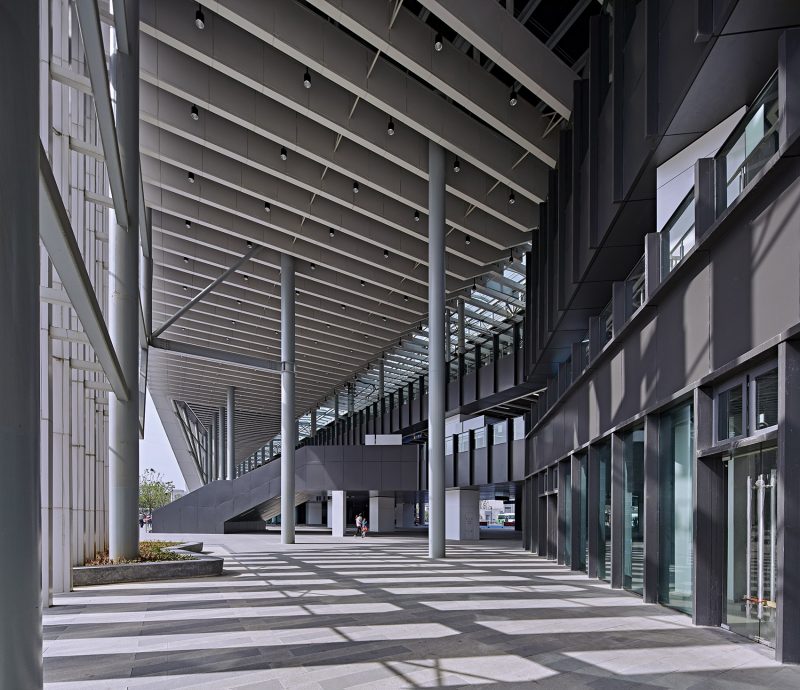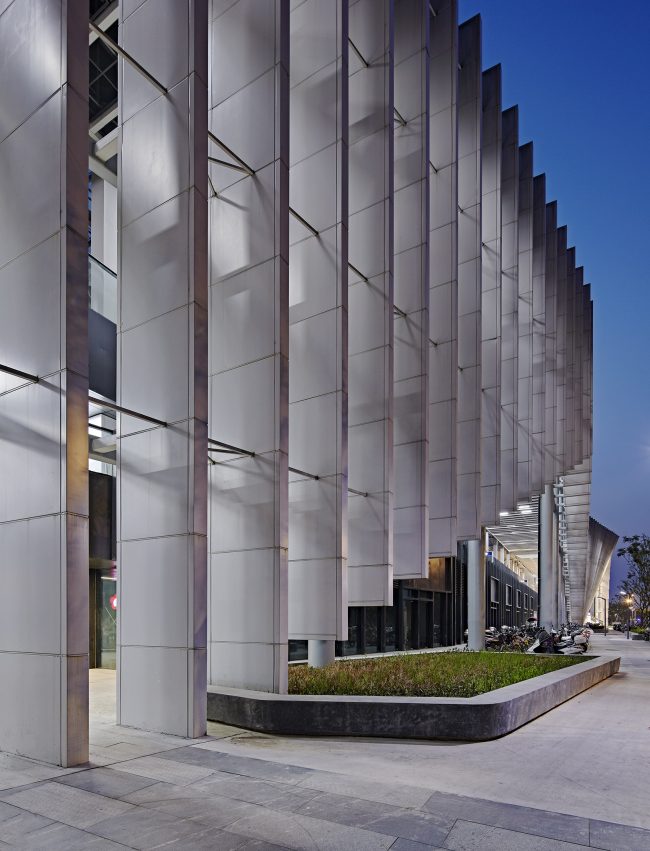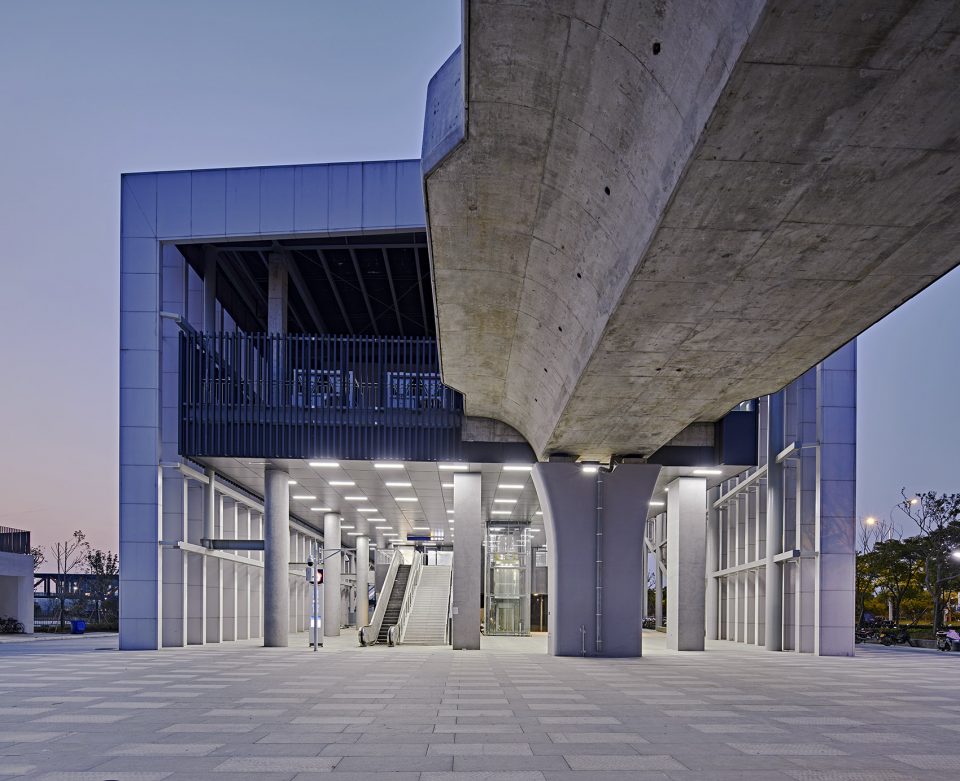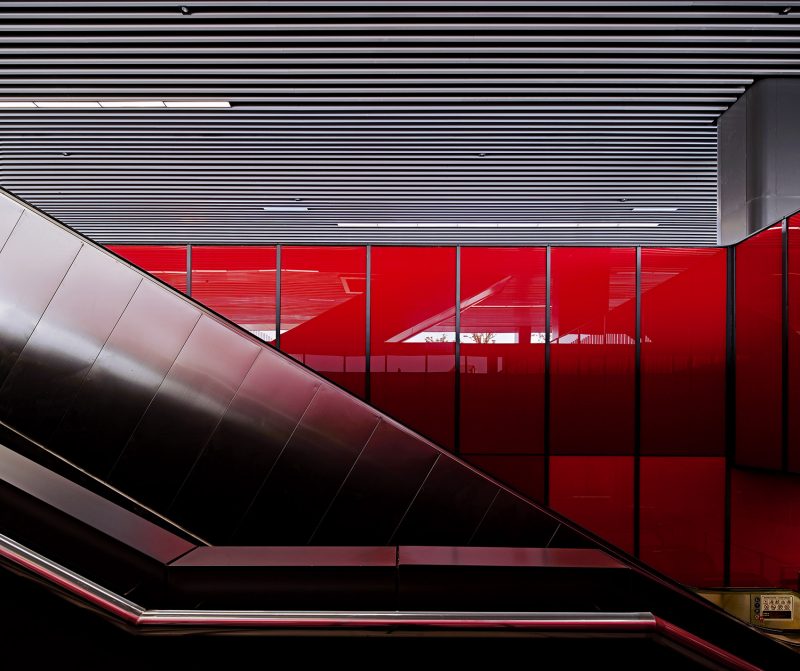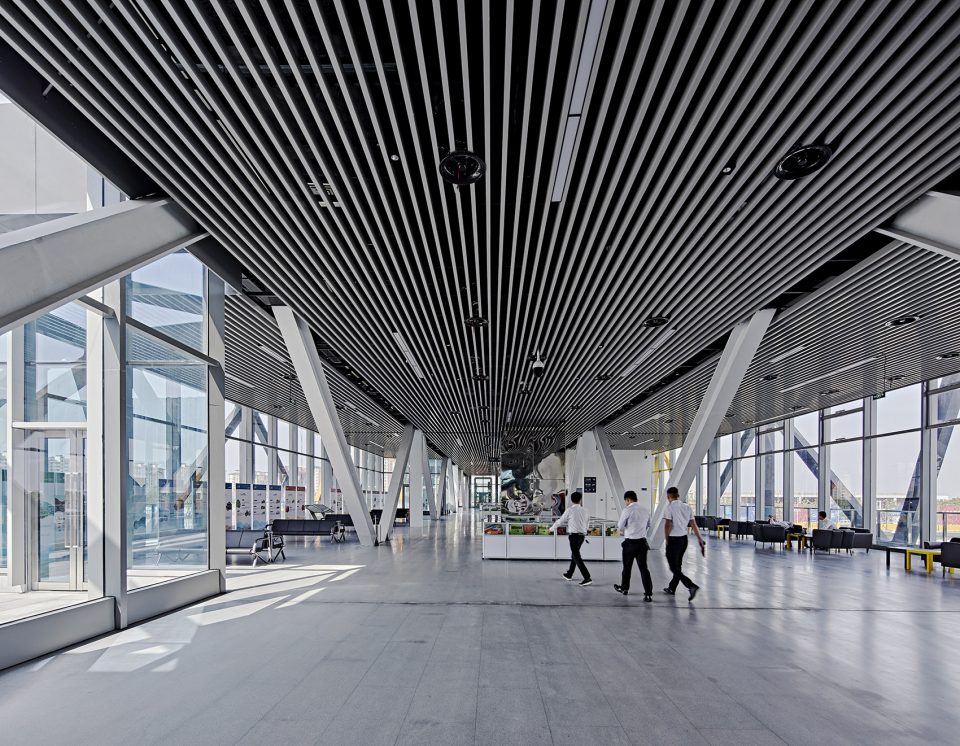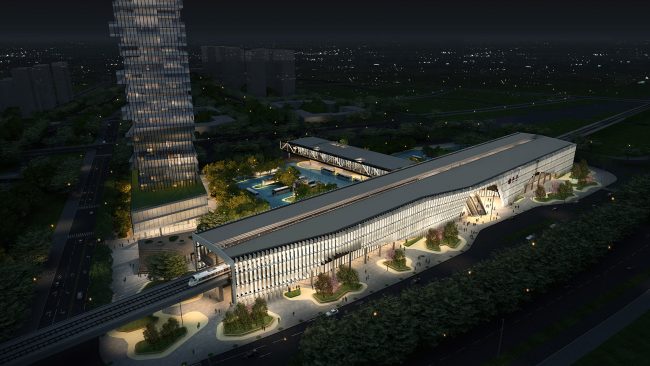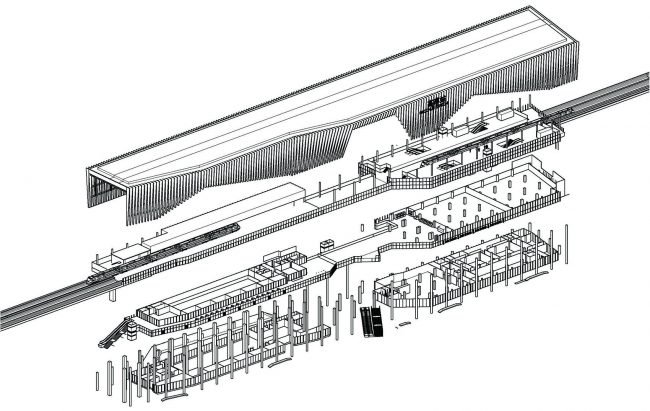|
高淳镇即将由轻轨和高速公路联通南京,缩短50分钟的行程将会促进商业的发展和人口的增长。新建火车站位于该镇规划中的北部增长区内的新商业中心,它将与新的城际巴士站及本地巴士枢纽相结合。预计到迷人的湖区和慢城区域游客数量增长,枢纽中包含了一个旅游会展中心。 Gaochun town is soon to be connected to Nanjing megacity by both light rail and freeway. A reduced 50-minute travel time will catalyse business development and population growth. The new rail station is located in the town’s planned new commercial centre, within its northern growth district. It is to be combined with a new intercity bus station and local bus interchange. A tourist exhibition centre is included at the interchange in anticipation of growing visitor numbers to this attractive lakes district and Citta Slow region. ▼建筑外观,exterior view ▼建筑入口,entrance ▼入口细部,entrance details ▼入口灰空间,disheartened space of entrance ▼立面细部,facade details
时空结|a knot of space-time 该建筑坐落在高淳的四种城市交通系统的众多交叉口之一:火车、公共汽车、私家车、步行网络之上下。它不只是毗邻这些系统,不是侧线。并且它不只是坐落在路线终点——它不是终点站。它既是四种不同系统的连接和隔离,又是一个将物体和事件分开的精细的时空结,从而避免了火车、公共汽车、汽车和行人之间的碰撞。 This building sits on, over, and under one of the many intersections of four urban movement systems in Goachun: the train, the bus, private vehicles, and pedestrian networks. It does not just sit adjacent to these systems – it is not a siding. And it does not just sit at the end of line or route – it is not a terminus. It is both a tying together and a keeping apart of the four different systems – it is an elaborate space-time knot that keeps objects and events apart – thus avoiding collisions between trains, buses, cars and pedestrians. ▼建筑西侧入口&通往公园的廊桥,The entrance to the west side of the building & the corridor bridge to the park ▼建筑南侧入口&轻轨轨道,The south entrance of the building & light rail track
分离流|separating flows 地下停车场为行人提供进出车辆的通道。一楼供步行和进出巴士、私家车和出租车的紧张共存。在这一层也有行人在二楼的火车站台之间来回,除了火车本身外,所有的东西都存在于这个高度紧张的楼层。二楼是行人步入列车月台及列车抵达离开的地方。 The below ground car-parking space provides pedestrians access to and from their arriving or departing cars.The ground floor is an intense co-existence of pedestrian movements to and from arriving and departing buses, private cars, and taxis. Also present at this level are pedestrians moving to and from the train platforms at the second floor – in fact everything but the trains themselves are present at this highly contested level.The second floor is for pedestrians to gain access to the train platforms and the arriving and departing trains. ▼建筑一层,供行人、进出巴士、私家车和出租车使用,The ground floor is an intense co-existence of pedestrian movements to and from arriving and departing buses, private cars, and taxis ▼楼梯,staircase ▼楼梯细部,staircase details
两片海洋|two seas 比起抑制地面层复杂的动线需求,BAU接受它们,将本案理解为两片海洋:一片沥青(供公共汽车和汽车)的海洋;和一片石面路(供行人)的海洋。两片海域都是连续的,两个海域都有建筑、停车场和植被作为点缀其中的岛屿。这两个明确地表现了地面循环系统不仅清晰而安全,从本案或附近的建筑看来在视觉上也非常强大。 Rather than resist the complex pragmatics of the movement demands at ground floor level, BAU embraced them, perceiving the site as two seas of pragmatics: a sea of bitumen (for buses and cars); and a sea of paving (for pedestrians). Both seas are continuous and both seas have islands of buildings, parking, and vegetation. These two clearly articulated on ground circulation systems are not only legible and safe; they are also visually very powerful when viewed from the adjacent buildings on and off the site. ▼二层轻轨站,The second floor, train platforms ▼轻轨候车室,Light rail waiting room
基础设施和动力学|infrastructure and kinetics 本案探索基础设施和动线的影像和诗意。公共汽车站是一个宜居的、稳定的(但非静止的)基础设施——一座横跨越沥青海的桥梁。相较之下,火车站是大型的视幻艺术作品。这座建筑横跨铁路线,跨越在石板路海和沥青海的两边。各种功能元素都沿着铁路线延伸开来。这些个小元素的组合被一个单一的大规模雕塑包裹着,一系列不同长度的动态叶片,速度会使它产生一个动态的帷幕。这些叶片被切割后用来留出入口和出口,也将保护建筑物室内免受来自东、西晒太阳的热量。 In contrast, the train station is large-scale op-art piece. This building straddles the rail line becoming an island in-between the sea of paving and the sea of bitumen. The various pragmatic elements of the program are spread along the rail line. This assemblage of smaller elements is wrapped with a single large-scale gesture, a series of dynamic blades of varying lengths, which at speed will create a kinetic veil. These blades are cut to provide entries and exits and will also protect the interior of the building from the heat gain of low altitude east and west sun. The architecture explores the iconography and poetics of infrastructure and movement. The bus station is a habitable and stable (but not static) piece of infrastructure – a bridge that spans the sea of bitumen. ▼效果图,renderings ▼分析图,analysis ▼轴测分解图,Axonometric decomposition diagram ▼总平面图,site plan 项目情况:2018年竣工 Project Status: Completed 2018 |

- 用手机查看
-
扫一扫看效果
